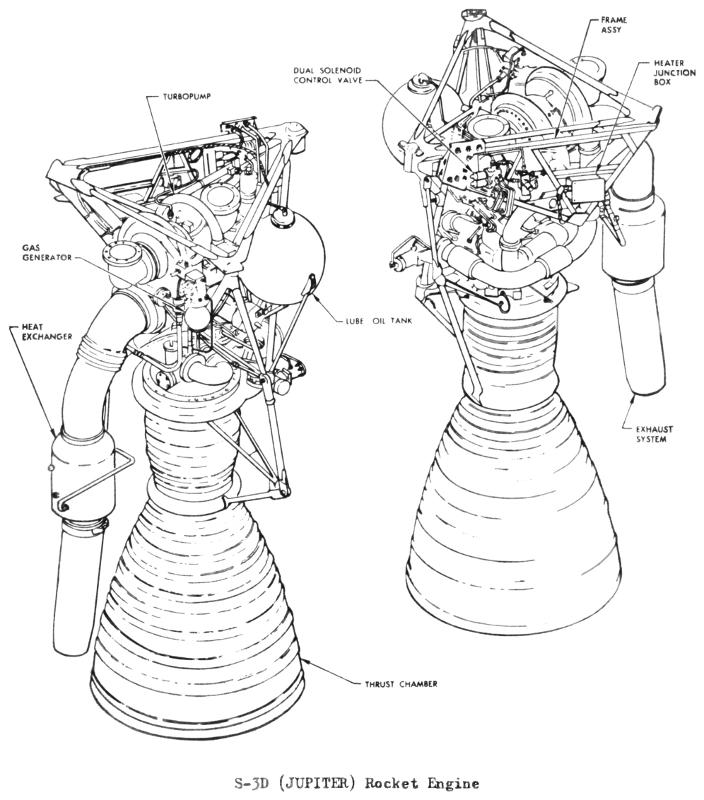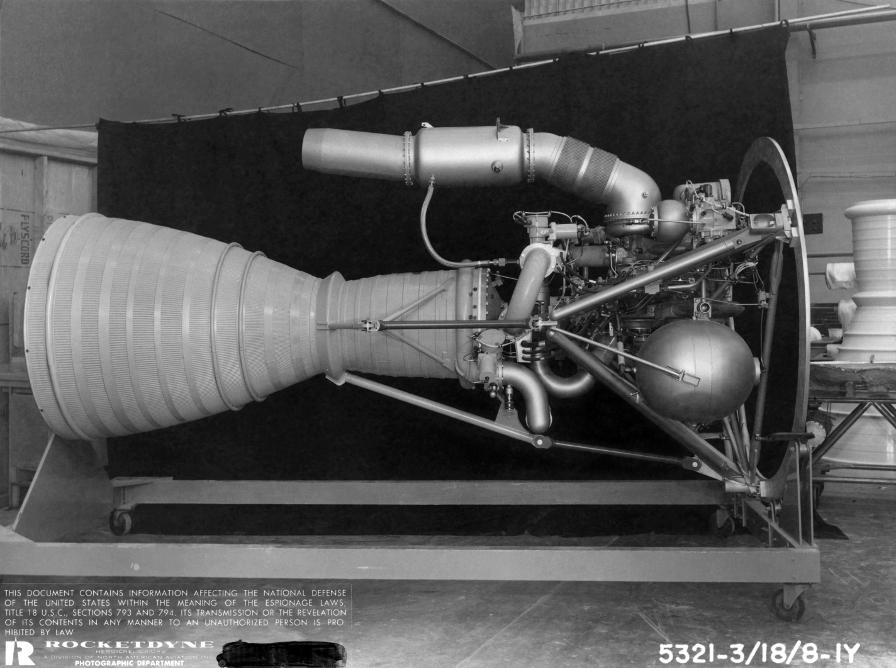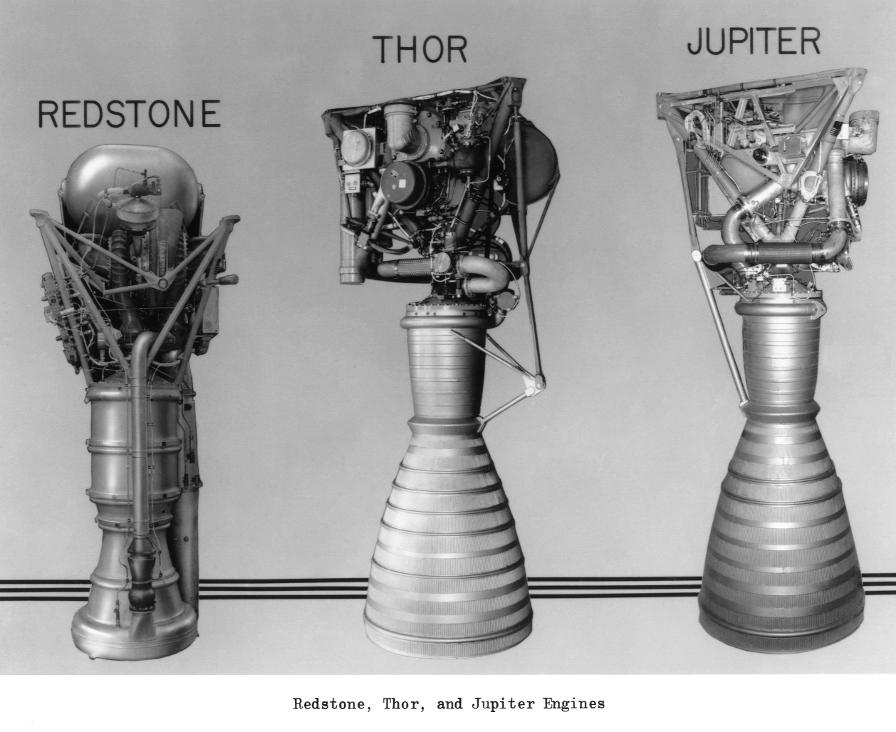S-3D Rocket Engine Overview
The S-3D was an early rocket engine used in the Jupiter missile; a modified version of this engine was also used on the Thor missile.
The S-3D dates back to 1954, when Rocketdyne (at the time the "Propulsion Division of North American Aviation") received an Army Ordnance contract to design an engine in the 135,000 pound range. This engine was to utilize the basic components and principles of the Atlas propulsion systems, which had been under development for several years.
In November of 1955, this engine was repurposed for the Jupiter and Thor and uprated to generate 150,000 pounds of thrust and sustain an increased operation time. The S-3D, in both its Jupiter and Thor incarnations, was to use a nearly-identical thrust chamber as the LR-89 (Atlas booster) rocket engine. As compared to the LR-89, the turbopumps and propellant high-pressure ducts were rearranged on the S-3D to be mounted on the engine's thrust frame assembly.
The S-3D burned RP-1 and LOX to develop 150,000 lb for a nominal duration of 178 seconds. The engine was gimballed and regeneratively cooled. It utilized two centrifugal turbopumps which were driven by a gas generator, also burning the engine propellants. A tubular-steel thrust frame provided a mount for most engine components, including the gas generator, turbopumps, and lubrication system.
With all engine components, including the turbopumps, mounted on the thrust frame, forward of the gimbal plane, the S-3D required flexible high-pressure ducts to deliver the propellant to the thrust chamber and injector. The S-3D was later simplified and uprated to serve as the basis for the H-1 rocket engine for the Saturn I. One of the changes was to move most engine components, including the turbopumps, onto the thrust chamber itself. With the the turbopumps on the same side of the gimbal block as the thrust chamber, much shorter, less-flexible high-pressure ducts could be used.
The S-3D was initially manufactured at Rocketdyne's Canoga Park facility, but in the fall of 1958, production was transferred to its Neosho, Missouri plant.
For additional information on the S-3D, see the Development of the Rocket Engine for the Jupiter Missile. See also my photos of the S-3D engine at the Air Force Museum and photos of an earlier model of this engine, the S-3 rocket engine, at the Udvar-Hazy Center. For information on how the S-3D was mounted on the Jupiter missile, see my Jupiter tail unit page.
Here is a diagram of the S-3D with callouts:
Click image for a 3986x4529 pixel version of this image in a new window.
From the page 16 of Development of the Rocket
Engine for the Jupiter Missile.
Scan and reconstruction by heroicrelics.
The engine components identified here include
- Frame Assy
- Dual Solenoid Control Valve
- Heater Junction Box
- Exhaust System
A hastily-erected black cloth serves as a backdrop for the engine in this photo, although some of the manufacturing floor is still visible in the background:
Click image for a 5697x4246 pixel version of this image in a new window.
From the page 17 of Development of the Rocket
Engine for the Jupiter Missile.
Scan and clean-up by heroicrelics.
Detailed comparisons of the engines used on the Thor versus the Jupiter are hard to come by. Some sources claim that the Jupiter and Thor engines were "similar in many respects," differing primarily in the more precise thrust control system of the Jupiter engine and the use of ground-mounted start tanks on the Jupiter rather than the engine-mounted Thor tanks (which were also used for vernier engine operation). While the same basic thrust chamber was used in Atlas booster (LR-89), Jupiter, and Thor engines, information on the more subtle differences between the engines is elusive.
There doesn't appear to be much agreement as to what to call the Thor engine, either (although, to be fair, the Thor had a long life and was upgraded several times). Although the occasional source calls it an S-3D (i.e., the same as the Jupiter engine) and the Air Force refers to both the Jupiter and Thor engines as the LR-79, I've also seen the Thor engine referred to as simply the S-3, the S-3E, various engines in the MB series (most commonly MB-3), and the YLR79-NA-13. I've also seen the engine, along with two LR-101 verniers, designated as the "LV-2A".
Rather than attempt to name the Thor engine, I'll just present the following photo, which depicts Redstone, Thor, and Jupiter engines. The Thor and Jupiter engines appear to be oriented differently, rotated with respect to each other, which hinders a direct comparison of the two engines.
Click image for a 2516x2055 pixel version of this image in a new window.
Photo courtesy Vince
Wheelock.
Clean-up by heroicrelics.



